Whether you’re outfitting a community court, a school gym, or a professional tournament, our custom pickleball nets are designed to meet high standards of play. Made with robust materials and tailored to your specifications, they ensure safety, visibility, and longevity. Perfect for leagues, clubs, and recreational facilities seeking reliable and customizable net solutions.
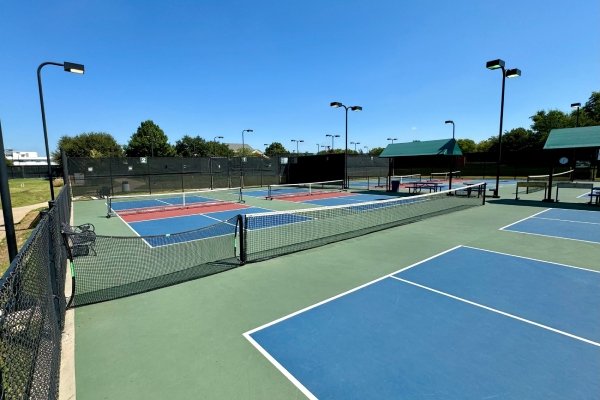
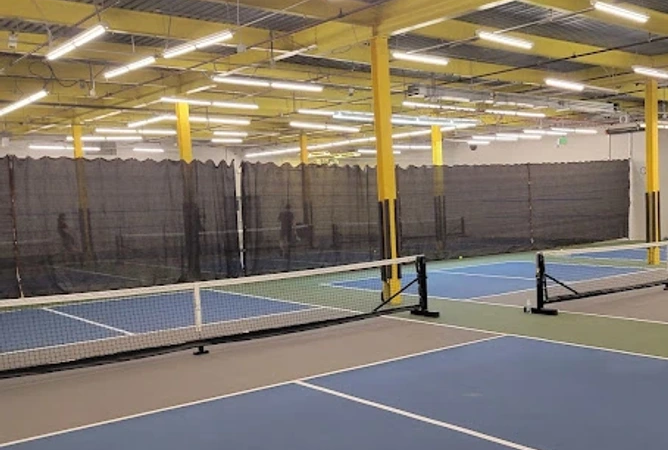
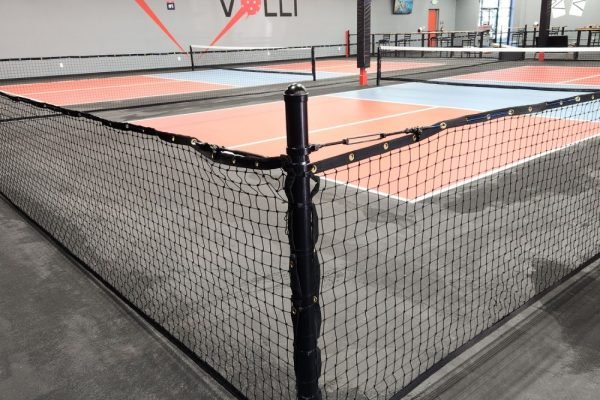
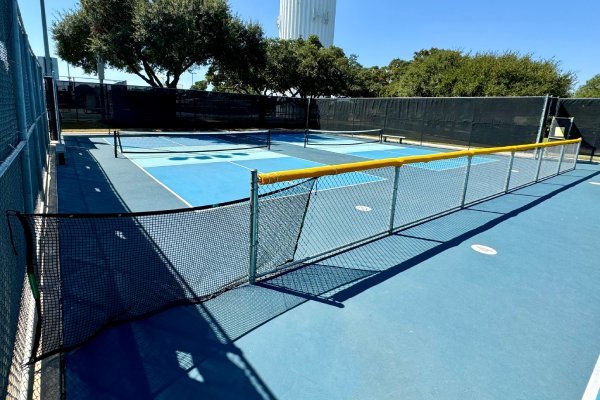
We understand that your brand matters. Our OEM/ODM services allow you to customize nets with logos, colors, and packaging to strengthen brand recognition. Whether you’re a club, distributor, or tournament organizer, our tailored solutions help you stand out in the market. With 25 years of expertise, we ensure every detail aligns with your vision, delivering nets that are not just functional but also marketing assets.
Our nets undergo batch-specific tensile and weather resistance tests (ISO9001 + SGS/TUV certified), ensuring they withstand intense play and outdoor conditions. This means fewer replacements, lower maintenance costs, and higher customer satisfaction for your business. Trust us to deliver nets that perform season after season.
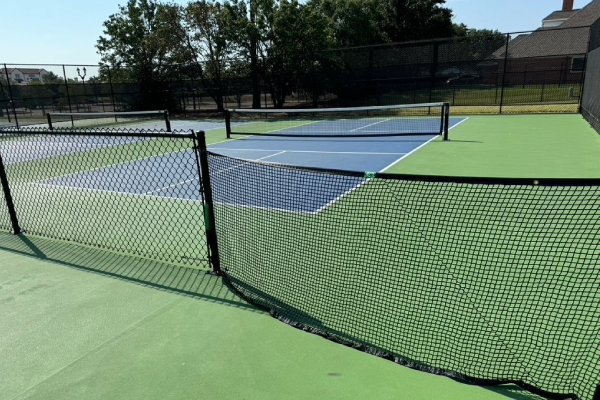
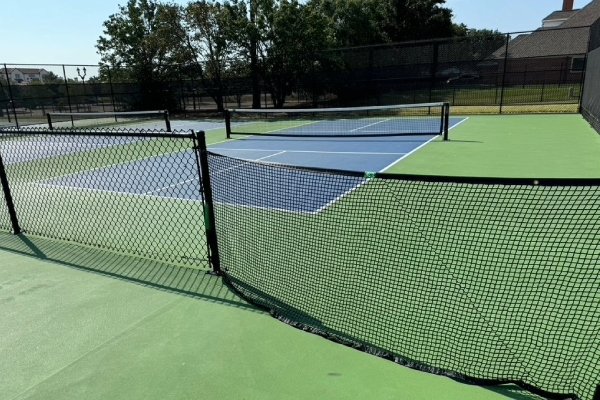
We know that supply chain delays can impact your operations. Our 11,000㎡ factory and 5,000㎡ warehouse enable us to handle both small and large orders efficiently. With DHL/FedEx partnerships, we guarantee 15-20 day delivery, reducing your inventory risks and ensuring timely restocks. No more waiting—just reliable, speedy service.
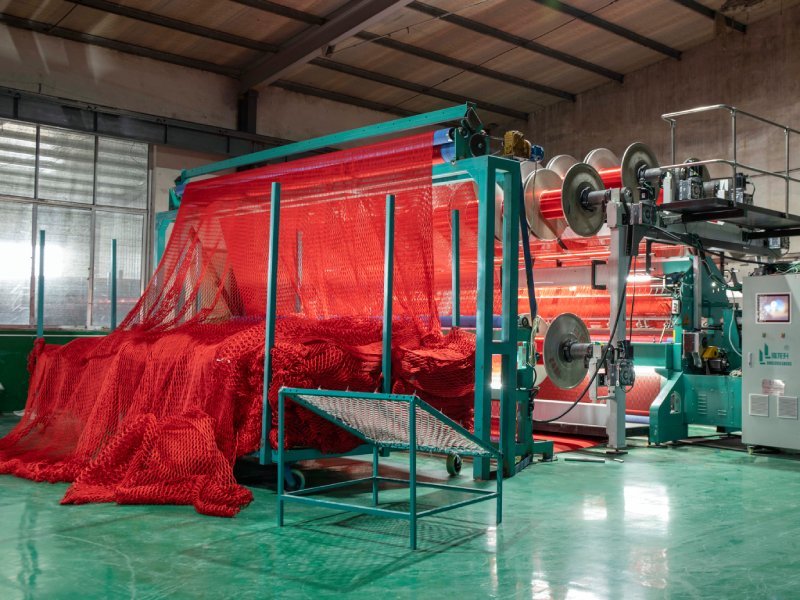
Looking for high-performance divider netting and safety netting solutions that combine durability, safety, and customization? Wenneting is your trusted partner! With 25+ years of expertise in manufacturing premium sports barrier nets, batting cages, and industrial safety nets, we help gyms, warehouses, children’s playgrounds, and sports facilities enhance safety, optimize space, and reduce costs.
Pickleball is one of the fastest-growing sports in the world, with millions of players enjoying its fun mix of tennis, badminton, and table tennis. Whether you’re setting up a court in your backyard, a community center, or a professional facility, one piece of equipment is critical for a great playing experience: containment netting. These nets keep pickleballs from flying out of the court, protect nearby areas, and ensure uninterrupted play. But with so many options available, how do you choose the right pickleball containment nets for your project? This guide will walk you through everything you need to know, from understanding your needs to exploring custom options and installing the nets properly. Let’s dive in!
Pickleball courts are smaller than tennis courts, measuring 20 feet wide by 44 feet long, but the fast-paced action means balls can easily fly out of bounds. Without containment nets, you’re chasing stray balls into neighboring courts, yards, or even streets, which disrupts the game and can cause safety issues. Containment nets act as barriers around the court, keeping balls in play and protecting players, spectators, and nearby property. They also make multi-court facilities more functional by preventing balls from one court from interfering with another.
Choosing the right containment nets ensures a smooth, enjoyable game while maintaining safety and professionalism. Whether you’re a homeowner, a contractor, or a facility manager, understanding the key factors in selecting and installing these nets will save you time, money, and hassle.
To pick the perfect containment nets for your pickleball court, you need to consider several factors: your court setup, usage frequency, budget, and aesthetic preferences. Here’s a breakdown of the most important aspects to guide your decision.
The type of court you’re building—indoor or outdoor, single or multi-court—greatly affects the kind of containment nets you need.
Outdoor Courts: Outdoor courts face weather challenges like wind, rain, and sun exposure. You’ll need durable, weather-resistant nets made from materials like nylon or high-performance HMWPE (high-molecular-weight polyethylene) that can withstand UV rays and moisture without fading or rotting. Look for nets with protective coatings, such as powder-coated frames or UV-treated materials, to extend their lifespan.
Indoor Courts: Indoor courts don’t face weather issues, so you can prioritize lighter, more transparent nets for better visibility. These nets are often used as dividers between courts in multi-sport facilities like gymnasiums. Thinner twine, such as #12 or #21 nylon, is popular for indoor settings because it’s less noticeable but still effective.
Single vs. Multi-Court: For a single court, you may only need netting around the perimeter. In multi-court setups, divider nets between courts are essential to prevent balls from crossing into adjacent games. These divider nets should be sturdy enough to handle impacts but flexible enough to avoid injuries if players run into them.
The material of the containment net determines its strength, longevity, and performance. Here are the most common options:
Nylon Netting: Nylon is the go-to material for pickleball containment nets due to its durability, flexibility, and resistance to wear. Twisted-knotted nylon, like DuPont® type 66-728, is especially popular for its strength and ability to handle ball impacts. It comes in various twine thicknesses, such as #12 (lightweight), #21 (mid-weight), and #36 (heavy-duty), to suit different needs.
HMWPE Netting: For professional or high-traffic facilities, high-performance HMWPE netting offers exceptional strength (up to 410 lbs tensile strength) and low wind resistance, making it ideal for outdoor stadiums or windy areas. It’s more expensive but perfect for long-term, heavy-duty use.
Knotless Nylon: Knotless nylon nets, available in 1-inch or 2-inch mesh, are smoother and more aesthetically pleasing. They’re great for facilities where appearance matters, and they can come in colors like black, white, blue, or yellow to match your court’s look.
When choosing a material, think about how often the court will be used. For occasional home use, a lightweight #12 twine nylon net may suffice. For commercial facilities or frequent play, opt for #21 or #36 twine or even HMWPE for extra durability.
The mesh size and twine thickness of the net affect its functionality and visibility.
Mesh Size: A 1-3/4-inch or 2-inch square mesh is recommended for pickleball containment because it’s small enough to stop pickleballs but large enough to minimize wind resistance and maintain visibility. Smaller 1-inch mesh is ideal if you also need to block smaller objects, like debris, but it’s less common.
Twine Thickness: Thicker twine (#36 or higher) is more durable and better for high-impact or outdoor use, but it’s heavier and more visible. Thinner twine (#12 or #21) is lighter and less noticeable, making it suitable for indoor courts or low-impact settings.
Containment nets typically range from 4 to 10 feet in height, depending on your needs. A height of 4 feet is common for divider nets in multi-court setups, while 10 feet is preferred for perimeter fencing to stop high-flying balls. For length, measure the perimeter of your court or the specific areas you want to enclose. Custom sizing is a major advantage of many netting suppliers, allowing you to order nets tailored to your exact dimensions.
Decide whether you need permanent or portable containment nets:
Permanent Nets: These are anchored into the ground with posts or attached to existing structures. They’re ideal for dedicated pickleball courts and offer maximum stability. Use steel or aluminum posts with rust-resistant coatings for outdoor setups.
Portable Nets: Freestanding or wheeled frames are great for temporary or multi-use courts. They’re easy to set up and move but may require additional weights, like sandbags, to stay stable.
Containment nets vary widely in price. Basic nylon nets for home use can cost as little as $1–$2 per square foot, while premium HMWPE nets for professional facilities may cost more. Factor in additional costs for posts, frames, or installation hardware. Portable nets are generally cheaper than permanent setups, which may require professional installation.
Black nets are the most common because they blend into the background and are less distracting. However, some facilities prefer white, blue, or yellow nets for a unique look or to match local regulations (e.g., neutral colors for lakeside courts). Check any local zoning rules or homeowner association guidelines before choosing a color.
Safety is critical, especially in multi-court or public facilities. Look for nets with padded edges or webbing borders to prevent injuries if players collide with them. For outdoor courts, ensure posts are rust-resistant and securely anchored to avoid tipping.
One of the biggest advantages of modern pickleball netting is the ability to customize it to your specific needs. Here’s how you can tailor your containment nets:
Suppliers like Gourock.com allow you to order nets cut to any size, ensuring a perfect fit for your court. Whether you need a 4-foot-high divider net for a multi-court facility or a 10-foot-high perimeter net for an outdoor court, custom sizing ensures no gaps or excess material. Use an online netting calculator or contact the supplier directly for a quote.
While black is standard, some suppliers offer knotless nylon nets in white, blue, or yellow. This is great for matching your facility’s branding or meeting local aesthetic requirements.
Many nets come with reinforced webbing borders (e.g., 1-1/2-inch wide) and grommets (metal eyelets) every 6–12 inches for easy attachment to posts or cables. You can customize the border material or grommet spacing to suit your installation method.
For unique needs, consider specialty options like:
For budget-conscious projects, you can create lightweight containment nets using materials like multi-use netting from hardware stores, fastened with zip-ties to existing fences. This is best for private, low-impact courts but may not be durable enough for heavy use.
Installing containment nets properly ensures they work effectively and last for years. Follow these steps for a successful setup, whether you’re installing permanent or portable nets.
Before buying or installing nets, measure your court and surrounding area. A regulation pickleball court is 20 feet by 44 feet, but you should have a total surfaced area of 30 feet by 60 feet for safety and playability. Decide where nets are needed:
Mark the locations for posts or attachment points, ensuring they’re spaced correctly (typically 22 feet apart for standard nets, measured from the inside of posts).
Your installation method depends on whether you’re using permanent or portable nets.
Permanent Installation:
Portable Installation:
After installation, test the net by hitting a few pickleballs against it. Check for:
Make adjustments as needed, such as tightening cables or adding weights to portable frames.
To keep your containment nets in top shape:
Several companies specialize in high-quality pickleball containment nets. Here are a few trusted options:
For budget-friendly DIY options, check hardware stores like Menards for lightweight multi-use netting that can be adapted for private courts.
Choosing the right pickleball containment nets is essential for creating a safe, functional, and enjoyable playing environment. By considering factors like court type, material, mesh size, and budget, you can find nets that meet your needs perfectly. Custom options allow you to tailor the nets to your court’s exact dimensions and aesthetic preferences, while proper installation ensures they perform well for years. Whether you’re building a backyard court for family fun or outfitting a professional facility, the right containment nets will elevate your pickleball experience. Use this guide to make informed decisions, and soon you’ll be enjoying uninterrupted games with confidence!
Sports netting is a cornerstone of safe and functional sports facilities, whether for community centers, professional arenas, or training academies. For B2B buyers—such as facility managers, contractors, and equipment suppliers—selecting the right netting ensures player safety, spectator protection, and compliance with industry standards. This comprehensive guide, tailored for B2B buyers, covers sports netting types, applications, customization options, and installation guidelines, incorporating tables to provide clear comparisons and actionable insights.
Sports netting serves critical functions, including containing balls, protecting spectators, and defining playing areas. With advancements in materials and design, modern netting solutions offer durability, versatility, and aesthetic appeal.
Choosing the right netting depends on the sport, environment, and budget. Below, we outline the primary types of sports netting, their properties, and their suitability for various applications, summarized in a comparison table.
Nylon is a premium choice for sports netting due to its strength and resilience. It’s ideal for high-impact sports and outdoor environments.
Characteristics:
Characteristics:
Polyester is suited for indoor applications, offering stability and a soft texture.
Characteristics:
Kevlar and other high-performance materials are used in demanding environments requiring maximum strength.
Characteristics:
Material | Durability | UV Resistance | Cost | Applications | Knotted/Knotless |
|---|---|---|---|---|---|
Nylon | High | Excellent (with treatment) | High | Baseball, soccer, hockey, tennis | Both |
Polyethylene | Moderate | Good | Low | Golf, recreational soccer, lacrosse | Both |
Polyester | Moderate | Low | Moderate | Indoor volleyball, badminton, futsal | Knotless |
Kevlar | Very High | Excellent | Very High | Professional baseball, motorsports | Knotted |
Knotted Netting: Stronger, ideal for high-impact sports like baseball. Knots enhance durability but may wear equipment.
Knotless Netting: Smoother surface, better for soccer, volleyball, and tennis. Offers a cleaner aesthetic and reduced wear.
Sports netting is used across various sports and facility types. Below, we detail key applications and their specific requirements, with a table summarizing netting specifications by sport.
Netting is critical for safety and containment in baseball and softball facilities.
Netting ensures goals and fields are functional and safe.
Golf netting protects players, spectators, and property from errant balls.
Driving Range Barriers: Tall polyethylene or nylon nets (20–100 feet, 7/8”–1” mesh).
Practice Nets: Portable polyethylene nets for individual practice.
Course Protection: Netting around specific holes to shield adjacent areas.
Netting supports gameplay and court separation.
Court Dividers: Knotless polyester or nylon (1”–2” mesh) for multi-sport facilities.
Game Nets: High-tension polyester or nylon with reinforced edges.
Practice Nets: Lightweight, portable nets for training.
Versatile netting solutions accommodate multiple sports in shared spaces.
Divider Nets: Retractable nylon or polyester nets for gymnasiums.
Protective Netting: High-strength netting for spectator safety.
Portable Nets: Lightweight nets for temporary setups.
Sport | Netting Type | Mesh Size | Material | Key Features |
|---|---|---|---|---|
Baseball/Softball | Backstop, Cage | 1”–1-3/4” | Nylon, Kevlar | High strength, UV resistance |
Soccer/Lacrosse | Goal, Perimeter | 4”–5” | Nylon, Polyethylene | Knotless, high visibility |
Golf | Range, Practice | 7/8”–1” | Polyethylene, Nylon | Tall, UV-resistant, lightweight |
Tennis/Volleyball | Divider, Game Net | 1”–2” | Polyester, Nylon | Tensioned, knotless |
Multi-Sport | Divider, Protective | 1”–4” | Nylon, Polyester | Retractable, durable |
Twine Size: Thicker twine (#36, #48) for strength, thinner (#18) for visibility.
Mesh Size: Small mesh (7/8”–1”) for high-impact sports, larger mesh (4”–5”) for soccer or lacrosse.
Knotted vs. Knotless: Knotted for strength, knotless for aesthetics and reduced wear.
Color: Black, green, white, or custom colors to match team branding.
Branding: Woven or printed logos for professional facilities or sponsorships.
UV/Weather Resistance: Essential for outdoor netting.
Flame Retardancy: Required for indoor compliance.
Retractable Systems: Motorized or manual for multi-use facilities.
Poles/Frames: Steel or aluminum for permanent or portable setups.
Cables/Anchors: Galvanized steel for secure tensioning.
Storage: Bags or reels for seasonal or portable netting.
Sports netting is a vital investment for creating safe, professional, and versatile sports facilities. By understanding netting types, applications, customization options, and installation best practices, B2B buyers can make strategic decisions that enhance safety and performance. Use the tables provided to compare options and streamline procurement. For tailored solutions, partner with trusted suppliers or consult facility design experts to meet your specific needs.
Absolutely. We produce official tournament-grade nets that meet all exact specifications for height, width, mesh size, and banding, ensuring they are approved for competitive play.
We pride ourselves on flexibility. We welcome small-batch and trial orders with no strict MOQ, allowing you to mitigate risk and test the market.
We use high-density polyethylene (HDPE) with UV stabilizer treatments. Our batch-specific weather resistance testing ensures the material won't degrade quickly in sun or rain, extending the product's lifespan.
Simply provide your logo artwork and Pantone color codes. Our team will handle the rest, from creating mock-ups for your approval to managing the production of custom-woven labels and graphic bands.
Our quality control is multi-tiered: ISO9001 systems govern our production, and each batch of raw material and finished net undergoes specific tensile strength and durability tests, often verified by third parties like SGS/TUV.
Typical lead time is 15-20 days. This includes manufacturing, quality checks, and shipping via our express partners (DHL/FedEx) to your destination port or warehouse.
Yes, we can provide production samples. This allows you to physically verify the quality, color, and craftsmanship before committing to a larger purchase.
We offer standard and secure payment terms, typically via T/T or L/C. Specific terms can be discussed based on the order volume and our long-term partnership.
When you partner with us, you benefit from our extensive experience serving clients worldwide. From local clubs to international distributors, our custom pickleball nets have been trusted for their consistency, quality, and adaptability. We’ve helped businesses like yours reduce costs, streamline supply. chains, and enhance customer satisfaction with nets that exceed expectations More Projects

25-Years Expertise in Safety Nets & Divider Netting | OEM/ODM Custom Colors/Logo | ISO9001 Certified | Fast 15-Day Delivery | 8,000 Ton Annual Output
Signup our newsletter to get update information, news & insight